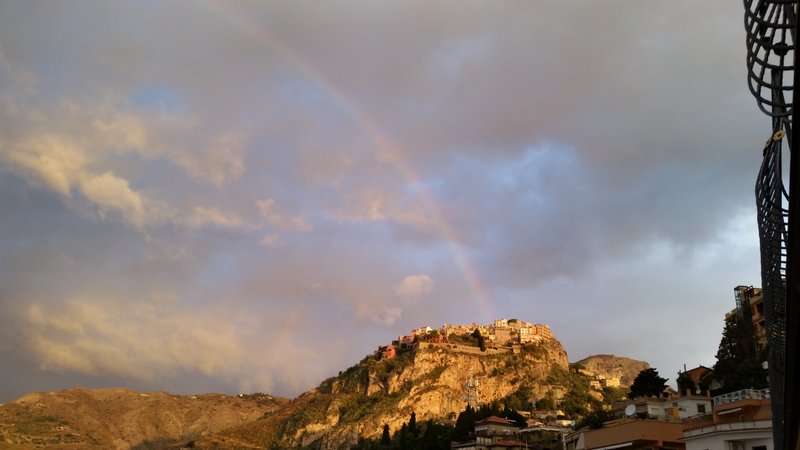though I hope it will be of some interest to family and friends.
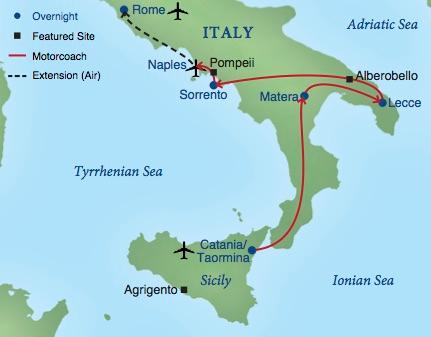
| Preface |
A Journey through Southern Italy by Joe Andriano, with Gail Andriano October 6-22, 2017 |

| Preface |
I have traveled to Italy a few times before--to Florence, Venice, and Rome--but I've always wanted to see the land of my roots, farther south. Both my grandmothers' families were from Sicily--from the towns of Gela and Santa Margherita di Belice--while both my grandfathers were from the village of Grotteria, in Calabria (the tip of Italy's "boot"). All four of my grandparents ended up in Albany, NY; so I'm from Albany, via Sicily and Calabria.
On this trip, I didn't get to go to the villages and cities where my grandparents and ancestors lived, but at least my feet touched their land, the Mezzogiorno.
The nine parts of this essay (in nine pages) certainly don't encompass everything we experienced; the pictures I selected are from about a thousand we took. Nor did I cover all of our activities, just the ones I want to remember most.
An Overview of the Trip
(there are links to each page in parentheses below, and there's a link to the next page on the bottom of every page):
(Part I) Since we wanted to visit sites we thought might be too difficult to navigate on our own, my wife Gail and I decided to take a “Smithsonian Journey,” a guided tour limited to 24 travelers. It started in Taormina, Sicily, where we stayed four nights and from which we crossed the island to visit ancient, amazing Agrigento.
(Part II) After leaving Taormina, we crossed by ferry over the Strait of Messina into Calabria; rode by bus through that fertile region into Basilicata, stopping at Matera where we stayed two nights (not in a cave!).
(Part III) From there we took a day-trip to Alberobello, village of unique structures called trulli;
(Part IV then on to gorgeously baroque Lecce, in Apulia, the heel of the boot--
(Part V) with day-trips to Otranto and Polignano a Mare on the Adriatic Sea.
(Part VI) Next we crossed the country from east to west coast, to Sorrento on the Tyrrhenian Sea, with a sojourn in Pompeii,
(Part VII) an afternoon in Capri,
(Part VIII) a drive on the Amalfi coast,
(Part IX) and finally (on our own) an afternoon and night to unwind in Naples.
*********
We began with a spectacular view of Mount Etna, steaming every day in puffs and streams of white vapor, . . .
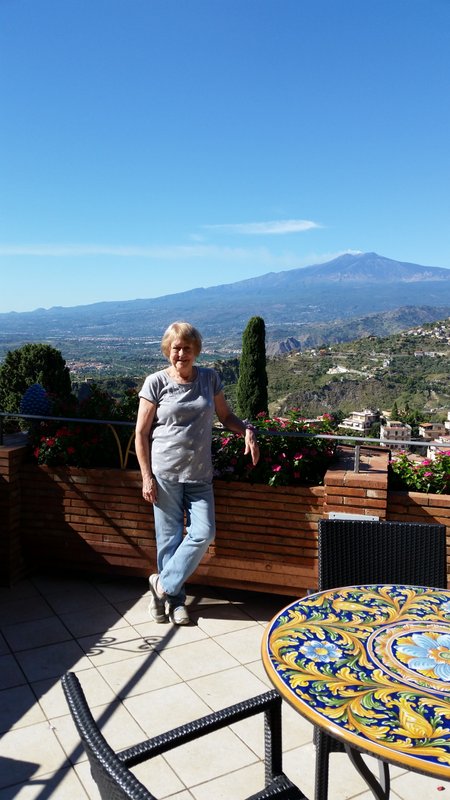
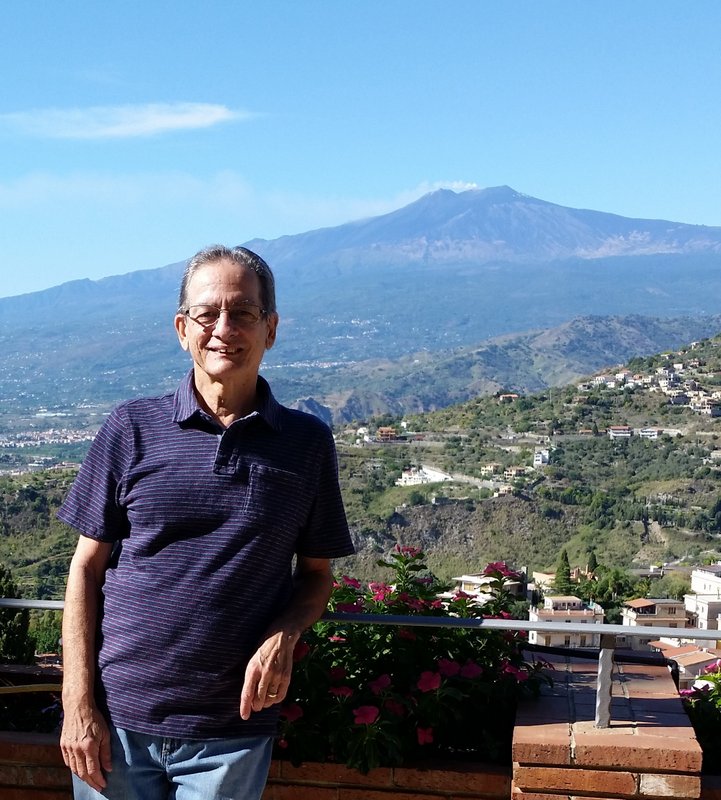
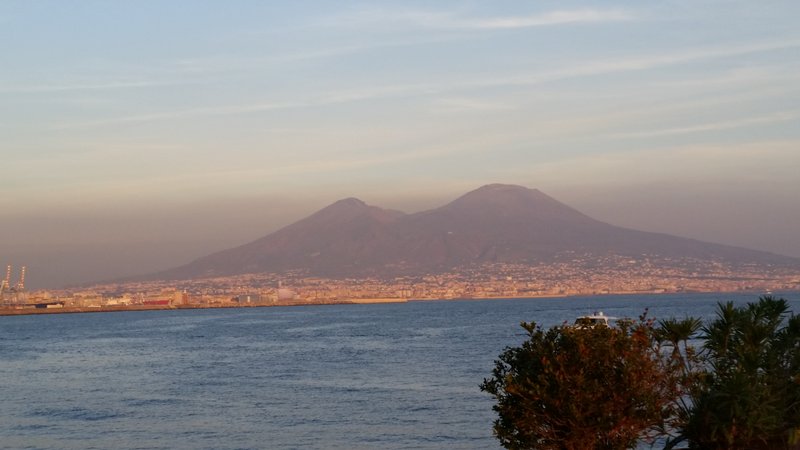
Vesuvio! that deceptively
serene menace to Naples and its whole bay. Several
Italians, including our
brilliant Sicilian guide Gaetano, remarked that Etna (in spite of its many
destructive eruptions) is seen as the
“good” volcano (traditionally viewed as female), bountifully enriching the soil and providing building
materials, whereas Vesuvius (which does the same) is feared as the “bad
volcano,” a mangled (male) monster overdue to blow up again, to burn and bury
whole
cities. (There's also a caldera
volcano, Campi Flegrei, abutting Naples that could bury the
city in ash at any time. Oh well what the hell, all life is precarious.)
In the two weeks of our tour, we didn’t fret about volcanos, earthquakes, or even rain. It only rained once early one morning in Taormina while we slept—when I opened the curtains a vivid rainbow arched down to the village of Castelmola, a pot of gold above us:
